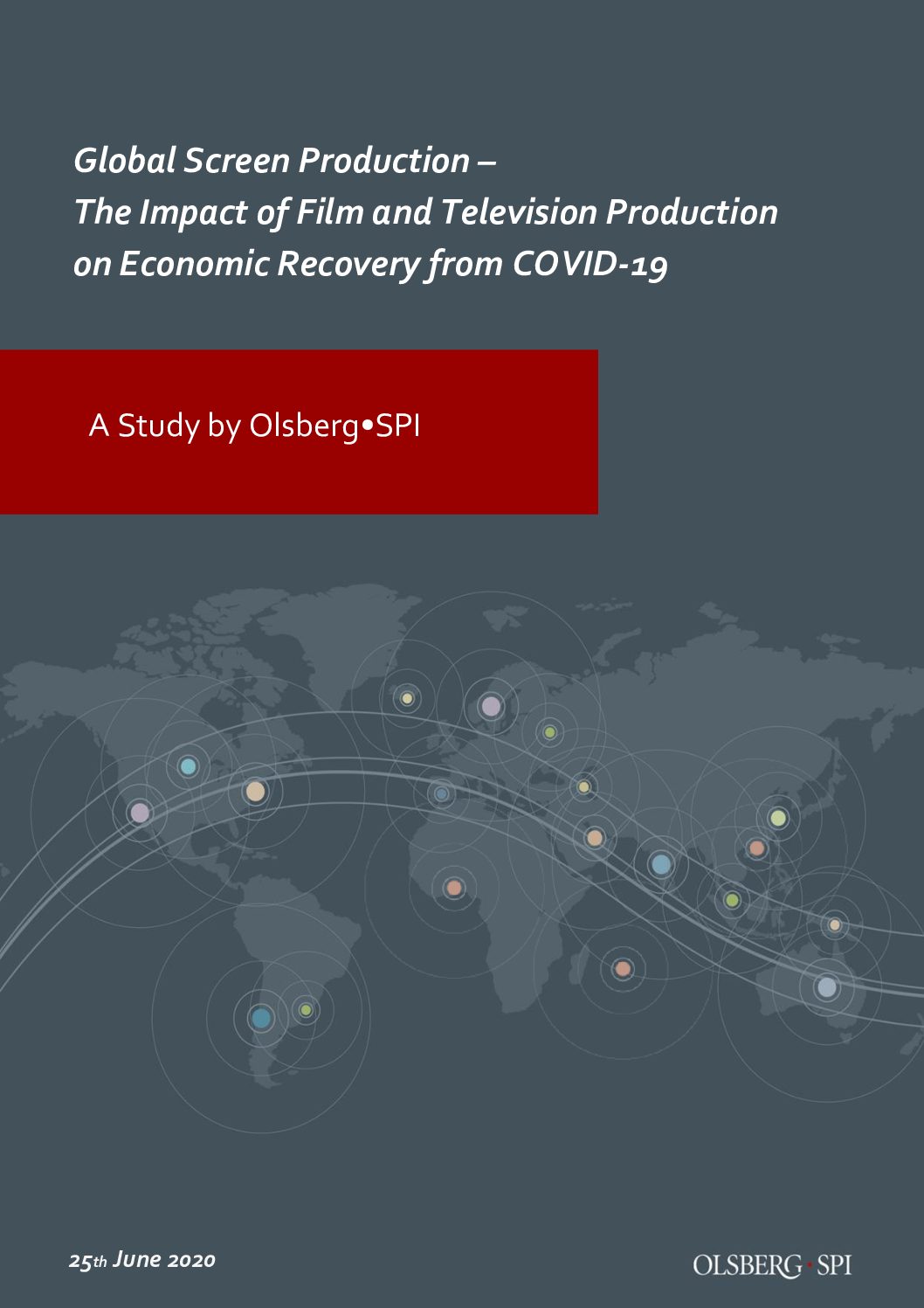Global Screen Production
– The Impact of Film and Television Production on Economic Recovery from COVID-19
Study researched and written by Olsberg•SPI, with the support of Media Business Insight and Netflix.
In recent years, Olsberg•SPI (“SPI”) has observed the phenomenon of the global Screen Production “deluge” across the world: the dynamic expansion of content creation for screens of all sizes. A driving motivation of this has been to stimulate and meet the worldwide growth in demand for scripted drama delivered across many streaming services. Until the COVID-19 pandemic occurred, growth in this economic activity had been ground-breaking.
Governments of all sizes and descriptions have increasingly recognised and valued the considerable economic benefits delivered by such activity. As a type of specialised and fleet-footed manufacturing activity, it creates modern, highly skilled, productive and mobile employment. It also typically delivers an attractive return on public investment alongside a variety of other economic measures. It increases inward investment, stimulates tourism, helps national branding, and enhances soft power.
These economic benefits sit alongside the many cultural impacts – such as enriching a nation’s sense of itself – delivered by the screen ecosystem. These benefits have been recognised for decades and have often been the starting point for government strategies addressing the sector.
Accordingly, public policies have been implemented around the globe to stimulate greater levels of domestic and internationally-sourced productions, most noticeably the extremely effective tool of automatic (i.e. non-selective) fiscal incentives such as cash rebates and tax credits. These are a cornerstone of the strategy for the sector and their use has grown to the point where there are now almost 100 such automatic incentives in operation globally.
Against this backdrop, governments around the world now face considerable economic challenges posed by the need for recovery from the COVID-19 pandemic.
The intent of this analysis (the “Study”) is therefore to provide a robust demonstration of the global economic power of Screen Production and examine its potential to assist economic recovery in the wake of COVID-19. This Study shows how maintaining and encouraging Screen Production at a national, regional and local level is one of the solutions to rejuvenating economies across the world.
This major new analysis presents a robust demonstration of the global economic power of Screen Production and examines its potential to significantly assist economic recovery from the COVID-19 pandemic. It includes the following elements:
- A forensic analysis of global Screen Production expenditure in 2019. This Study represents the first time that spend has been quantified globally to such a detailed degree
- An analysis of the economic impacts delivered by Screen Production. Utilising a meta- analysis approach, this element focuses on output and employment, and involved analysis of impact metrics in 47 studies
- Evidence on the speed and efficiency with which production spend is typically undertaken across the production cycle, based on budget analysis of actual projects
- An assessment of which economic sectors as a whole benefit from this investment, particularly those supply chain industries severely hit by the current downturn
- A calculation of the economic losses to output and employment caused by the current COVID-19 related hiatus during the first six months of 2020.
